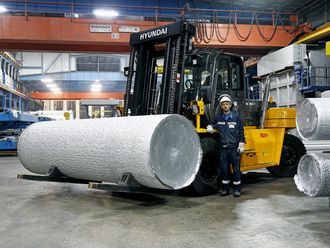
International gateway airports are typically big and cumbersome, often feeling overwhelming to frequent travellers - and downright daunting to international arrival passengers.
The arrival sequence at an international gateway airport is one of the most impactful passenger journeys. The first impression for first-time travellers arriving at the airport must be memorable. Unexpected meaning design efforts must be guided toward ensuring an irreplaceable experience. As such, design should focus on six key elements:
Creating an authentic environment on way to passport control
After a long flight, where the passenger has just spent hours in a confined space, they need a release. Humanising the space with the introduction of soft materials, high ceilings, natural light and scaling elements will provide the mood for passengers to relax and unwind.
The simple gesture of providing strategic places to rest and compose on the long walk can change the passenger mood. In parallel with those softer touches, giving passengers fast and tactile information on what to expect yields a more confident passenger upon arrival at Immigration.
Designing a unique feel within immigration hall
The Immigration Hall is a root of international passenger anxiety, yet the default at most airports is to put these facilities in the basement of the building. Elevating this space and giving it a similar feel to the departures sequence will make it a signature element to be enjoyed instead of simply a necessary processing point.
Introducing design elements that depict the local culture or experience will ease the passengers emotions as they move through the various check points.
Processing operations
The eagerly-anticipated Terminal A at Abu Dhabi International Airport is now open to the public, marking an exciting new step in Middle East travel and strengthening the UAE as a global aviation hub. The terminal is capable of processing up to 45 million passengers per year and includes biometric technology which will streamline the screening and boarding process and maximize efficiency.
The Dubai Airport Fast Track service is another example where visitors get an enjoyable and quick experience while minimizing the inconveniences sometimes connected with airport processes. A dedicated team of agents assist passengers with immigration and customs procedures, saving valuable time for passengers.
It was recently announced that Dubai residents will be able to travel through the airport without passports, visas or any travel documents. Whilst the system isn’t in place yet, I’m optimistic about the prospect of seamless travel.
Digital wayfinding signage
Analog signage strategies are often too static, whereas a digital strategy can allow transit hubs to change messaging quickly. Dynamic and personalized digital wayfinding can help guide users to the most efficient pathways whilst making them feel at ease.
Signs which adapt to native language based on pings from your smartphone give the passenger information in real time and keep the entire process flowing.
Activity outside the terminal
The moment that a passenger hits the door to the world outside of the terminal, confusion and chaos of new environments can ensue. Airports can take advantage of passenger downtime in the baggage claim area to outline options for ground transportation and wait times.
A roaming ground transportation concierge or an immersive VR station within the claim hall could show the path to taxis, buses, and subways outside, giving the passenger comfort and allowing them to pre-plan the next stage of the journey.
At Abu Dhabi’s Terminal A, besides taxi and public transport connectivity, Etihad and its airline partners offer complementary coach services and pre-booked chauffeur-driven cars to Dubai and Al Ain which elevates the passenger experience.
Transfer efficiency: think upward
For passengers using the airport for connections, transfers can be highly stressful situations. The key challenges are walking distance, timing to clear arrival processing, updated information on next flights, and navigation to the final gate.
Historically, the use of carts, moving walks, and other services slow the process because the space competes with other pedestrians. Most terminals are constrained in floor space to create channels for different speeds of travel.
The logical option is to expand upward to create transfer “expressways” above the outbound passengers. Creating a dedicated transfer level benefits the passenger and gives new flexibility to the airport.









